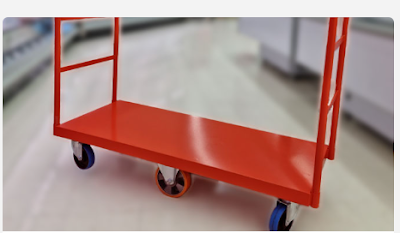A Guide to Efficient Material Handling Equipment Maintenance
The material handling equipment plays a crucial role in
ensuring smooth operations. From forklifts to conveyor belts, these machines
are the backbone of any warehouse or distribution centre. To keep your
operations running seamlessly and avoid costly downtime, it's essential to
implement a robust maintenance routine for your material handling equipment
from reflexequip.com.au. In this blog, we will explore key
strategies for maintaining your material handling equipment to maximize
efficiency and prolong its lifespan.
Regular Inspections:
The first step in effective equipment maintenance is
conducting regular inspections. Create a checklist tailored to each type of
equipment used in your facility. During these inspections, look for signs of
wear and tear, loose components, and any unusual noises. Addressing minor
issues early can prevent them from escalating into major problems that may lead
to equipment failure.
Lubrication:
Proper lubrication is vital for the smooth functioning of
moving parts in material handling equipment. Create a lubrication schedule
based on manufacturer recommendations and the specific usage patterns of your
machinery. Use high-quality lubricants and ensure that the application is
consistent. Regular lubrication reduces friction, minimizes wear, and
contributes to the overall efficiency of the equipment.
Training and Education:
Investing in training and education for your equipment
operators is a proactive approach to maintenance. Ensure that your team is
well-versed in the proper operation of each machine and understands the
importance of adhering to maintenance schedules. Educated operators are more
likely to notice early signs of issues and can contribute to a culture of preventive
maintenance.
Keep a Maintenance Log:
Maintaining a detailed log of all maintenance activities
is essential for tracking the performance of your equipment. Include
information such as inspection dates, repairs, replacement of parts, and any
unusual observations. Analyzing this data over time can help identify patterns,
enabling you to make informed decisions about when to replace components or
upgrade equipment.
Prioritize Safety:
Safety is paramount in any industrial setting. Regular
maintenance not only ensures the operational efficiency of your material
handling equipment but also contributes to a safer work environment. Regularly
check safety features such as emergency brakes, warning lights, and backup
alarms. Address any safety concerns promptly to minimize the risk of accidents.
Plan for Downtime:
While it may seem counterintuitive, planning for downtime
is a critical aspect of equipment maintenance. Establish a schedule for routine
maintenance tasks that may require the equipment to be temporarily out of
service. This planned downtime is far less disruptive than unexpected
breakdowns and allows you to address issues before they escalate.
Employee Feedback:
Encourage your team to provide feedback on equipment
performance. Operators who use the machinery daily often notice subtle changes
in performance that may indicate underlying issues. Create an open
communication channel for employees to report concerns and observations,
fostering a collaborative approach to equipment maintenance.
Collaborate with Suppliers:
Maintain open communication with your equipment
suppliers. They can provide valuable insights into the best maintenance
practices for their specific products. Stay informed about updates, recalls, or
improvements related to the equipment you use. Collaborating with suppliers can
also ensure access to genuine replacement parts, optimizing the performance and
longevity of your material handling equipment.
Conclusion:
Efficient material handling equipment is the backbone of a well-functioning warehouse or distribution center. By implementing a proactive and comprehensive maintenance strategy, you can minimize downtime, extend the lifespan of your equipment, and create a safer working environment. Regular inspections, proper lubrication, employee training, and collaboration with suppliers are key elements in a successful maintenance program. Remember, investing time and resources in maintenance today will pay off in increased productivity and reduced costs in the long run.




Comments
Post a Comment